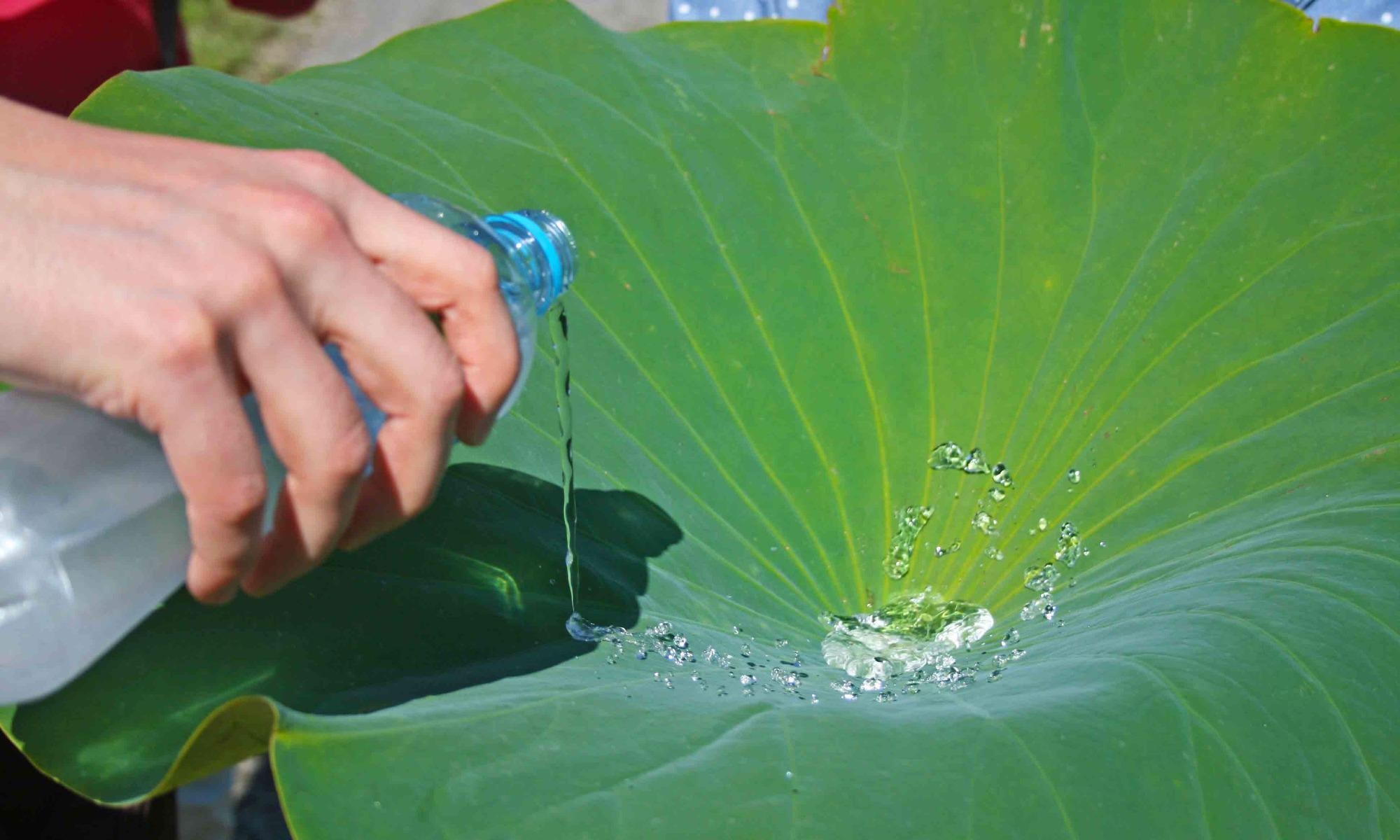A pioneering plastic created at RMIT University repels dirt and liquids—similar to a lotus leaf—then breaks down quickly once in soil.
 The design of the self-cleaning bioplastic was inspired by the lotus leaf, which effortlessly repels water and dirt. (Image Credit: RMIT University).
The design of the self-cleaning bioplastic was inspired by the lotus leaf, which effortlessly repels water and dirt. (Image Credit: RMIT University).
PhD researcher Mehran Ghasemlou from RMIT and lead author of the study published in Science of the Total Environment stated that the new bioplastic was suitable for fresh food and takeaway packaging.
Plastic waste is one of our biggest environmental challenges but the alternatives we develop need to be both eco-friendly and cost-effective, to have a chance of widespread use. We designed this new bioplastic with large-scale fabrication in mind, ensuring it was simple to make and could easily be integrated with industrial manufacturing processes.
Mehran Ghasemlou, PhD Researcher and Study Lead Author, RMIT University
Ghasemlou said nature was full of cleverly-designed structures that could stimulate scientists striving to create new high-performance and versatile materials.
“We’ve replicated the phenomenally water-repellent structure of lotus leaves to deliver a unique type of bioplastic that precisely combines both strength and degradability,” he said.
The bioplastic is produced from inexpensive and extensively-available raw materials—starch and cellulose—to maintain production costs at a low level and support speedy biodegradability.
The fabrication process does not necessitate heating or hi-tech equipment and would be simple to upgrade to a roll-to-roll production line, Ghasemlou said.
Naturally Compostable
While biodegradable plastics are a budding market, not all bioplastics are the same. The majority of biodegradable or compostable plastics entail industrial processes and elevated temperatures to decompose.
Industrial intervention is not required for the new bioplastic to biodegrade, with trials demonstrating it decomposes naturally and rapidly in soil.
There are big differences between plant-based materials—just because something is made from green ingredients doesn’t mean it will easily degrade. We carefully selected our raw materials for compostability and this is reflected in the results from our soil studies, where we can see our bioplastic rapidly breaks down simply with exposure to the bacteria and bugs in soil.
Mehran Ghasemlou, PhD Researcher and Study Lead Author, RMIT University
“Our ultimate aim is to deliver packaging that could be added to your backyard compost or thrown into a green bin alongside other organic waste, so that food waste can be composted together with the container it came in, to help prevent food contamination of recycling,” Ghasemlou added.
Lotus-Inspired Structures
Lotus leaves are well-known possess some of the most water-repellent surfaces found on earth and are nearly impossible to get dirty.
The secret is in the surface structure of the leaf, which is made up of minute pillars topped with a waxy layer.
Any water that falls on the leaf stays a droplet, simply rolling off with the help of wind or gravity. The droplets remove dirt as they slide down, thus keeping the leaf spotless.
To create their lotus-stimulated material, the RMIT team of science and engineering scientists first synthetically designed a plastic composed of starch and cellulosic nanoparticles.
This bioplastic’s surface was imprinted with a design that imitates the structure of lotus leaves and then coated with a protective layer of a silicon-based organic polymer known as polydimethylsiloxane (PDMS).
Tests reveal the bioplastic not only repels liquids and dirt efficiently, but also preserves its self-cleaning properties after being scratched with abrasives and exposed to acid, heat, and ethanol.
Corresponding author, Professor Benu Adhikari, said the design surpasses crucial challenges of starch-based materials.
Starch is one of the most promising and versatile natural polymers, but it is relatively fragile and highly susceptible to moisture. Through our bio-inspired engineering that mimics the ‘lotus effect’, we have delivered a highly-effective starch-based biodegradable plastic.
Benu Adhikari, Professor and Study Corresponding Author, RMIT University
Ghasemlou is presently working with a bioplastic company, which is assessing further advances of these unique water-repellant materials. The RMIT research group aims to work with other potential partners to discover commercial applications for the bioplastic.
A lotus-inspired bioplastic that’s sustainable and compostable | RMIT University
Video Credit: RMIT University.
Journal References:
Ghasemlou, M., et al. (2022) Biodegradation of novel bioplastics made of starch, polyhydroxyurethanes, and cellulose nanocrystals in soil environment. Science of the Total Environment. doi.org/10.1016/j.scitotenv.2021.152684.
Ghasemlou, M., et al. (2021) Robust and Eco-Friendly Superhydrophobic Starch Nanohybrid Materials with Engineered Lotus Leaf Mimetic Multiscale Hierarchical Structures. ACS Applied Materials and Interfaces. doi.org/10.1021/acsami.1c09959.